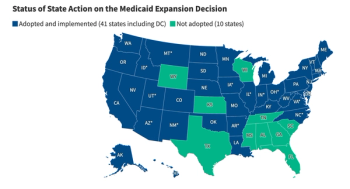
Catch up on vaccinations
Tools help patients and physicians
Fully half of American children fall behind the recommended vaccination schedule set by the Centers for Disease Control and Prevention (CDC) and the American Academy of Pediatrics. The rates for adolescents and adults are even worse.
Getting patients back on schedule is no small task. That’s why the CDC contacted researchers at Georgia Institute of Technology to help develop catch-up protocols that physicians could use to take the guesswork out of scheduling.
“Physicians are faced with catching people up on vaccinations more frequently than is recognized,” says Pinar Keskinocak, PhD, co-director at the H. Milton Stewart School of Industrial & Systems Engineering at Georgia Tech.
Keskinocak and her team have developed tools for children, adolescents and adults that have been accessed more than 375,000 times since they were released for the public.
The Catch-up Immunization Scheduler for Children ages 0 to 6 can be accessed at:
The Adult Vaccine Scheduler can be accessed at:
The Interactive Adolescent Scheduler can be accessed at:
Newsletter
Get the latest industry news, event updates, and more from Managed healthcare Executive.





















































